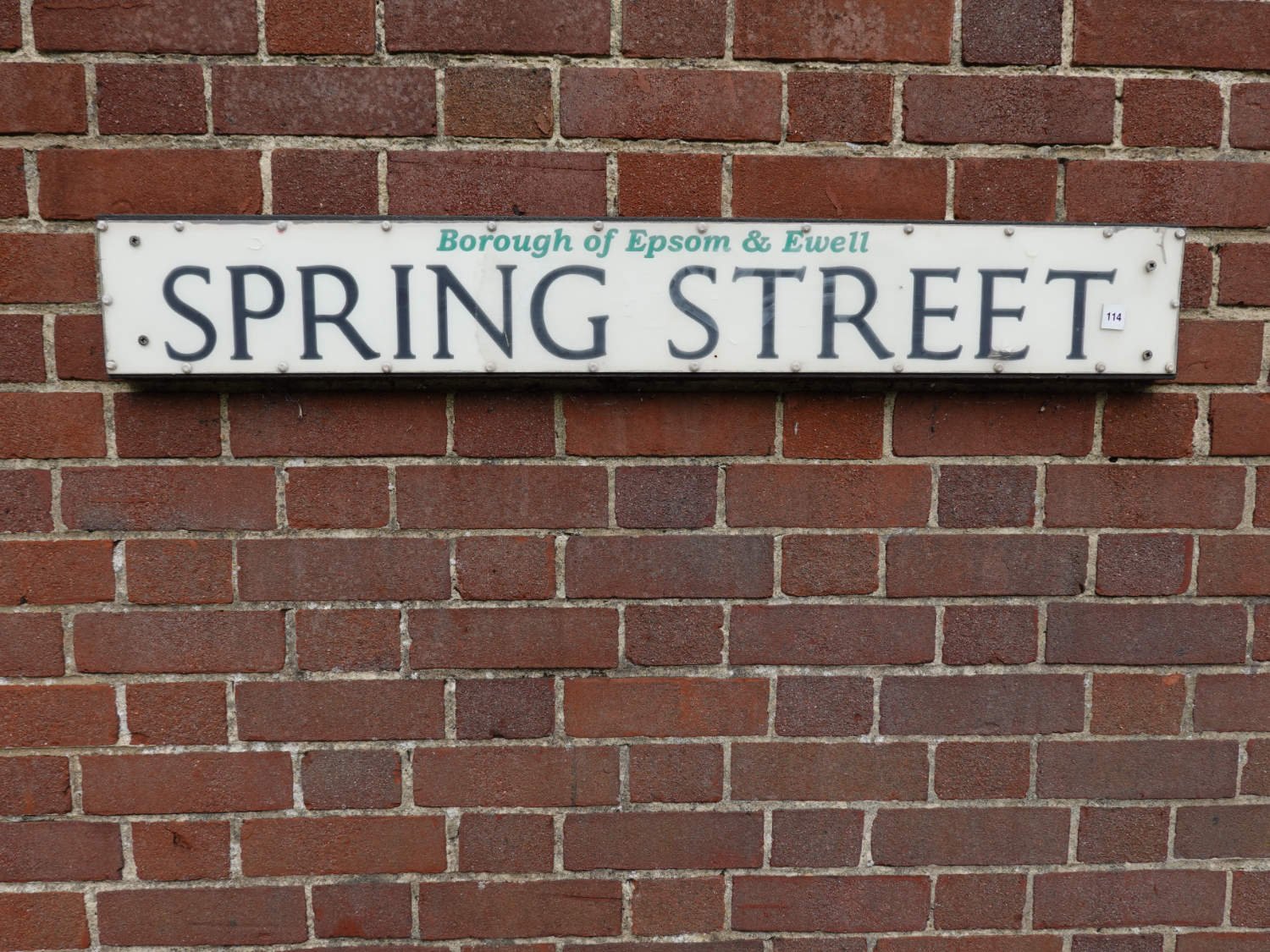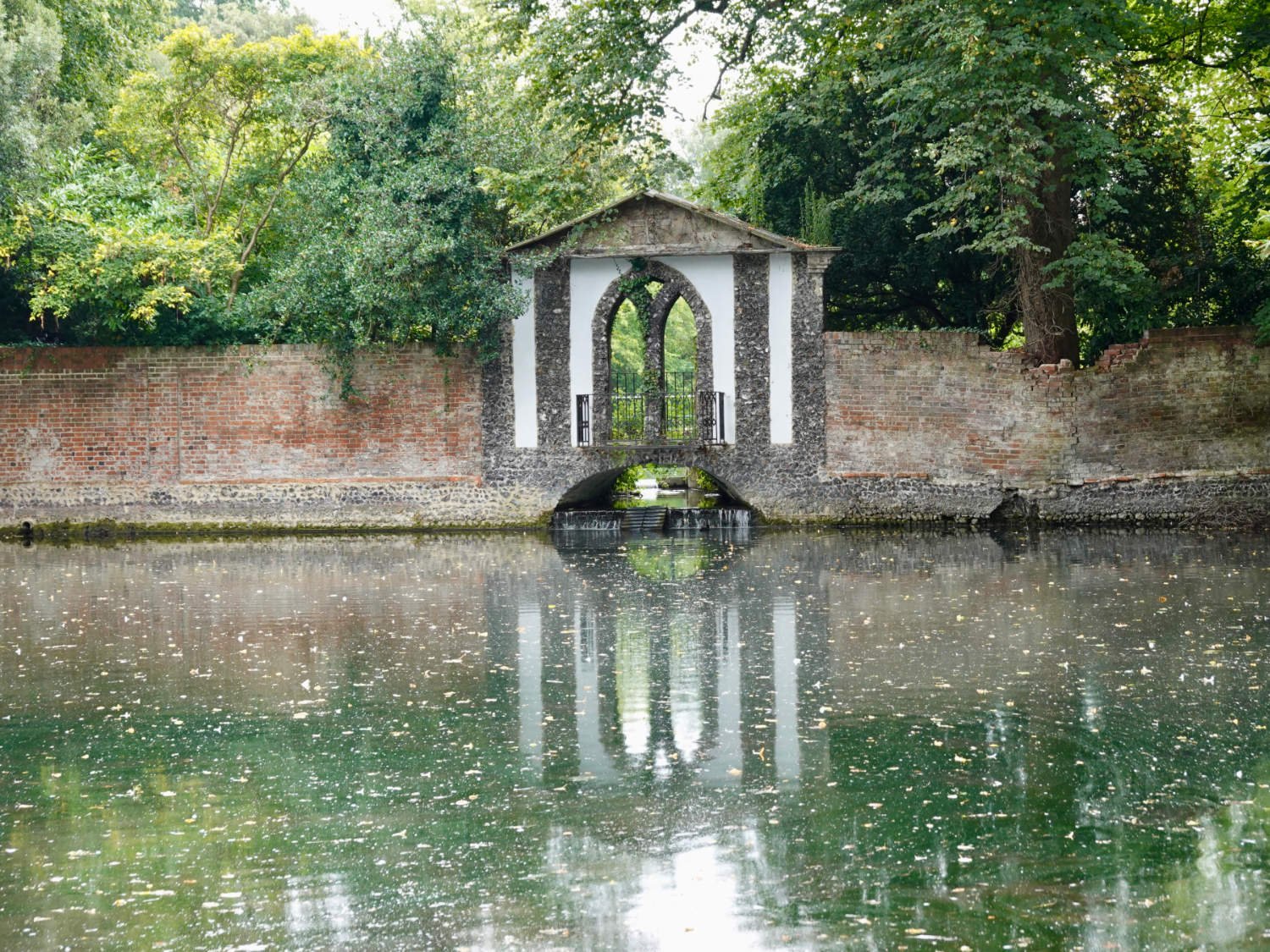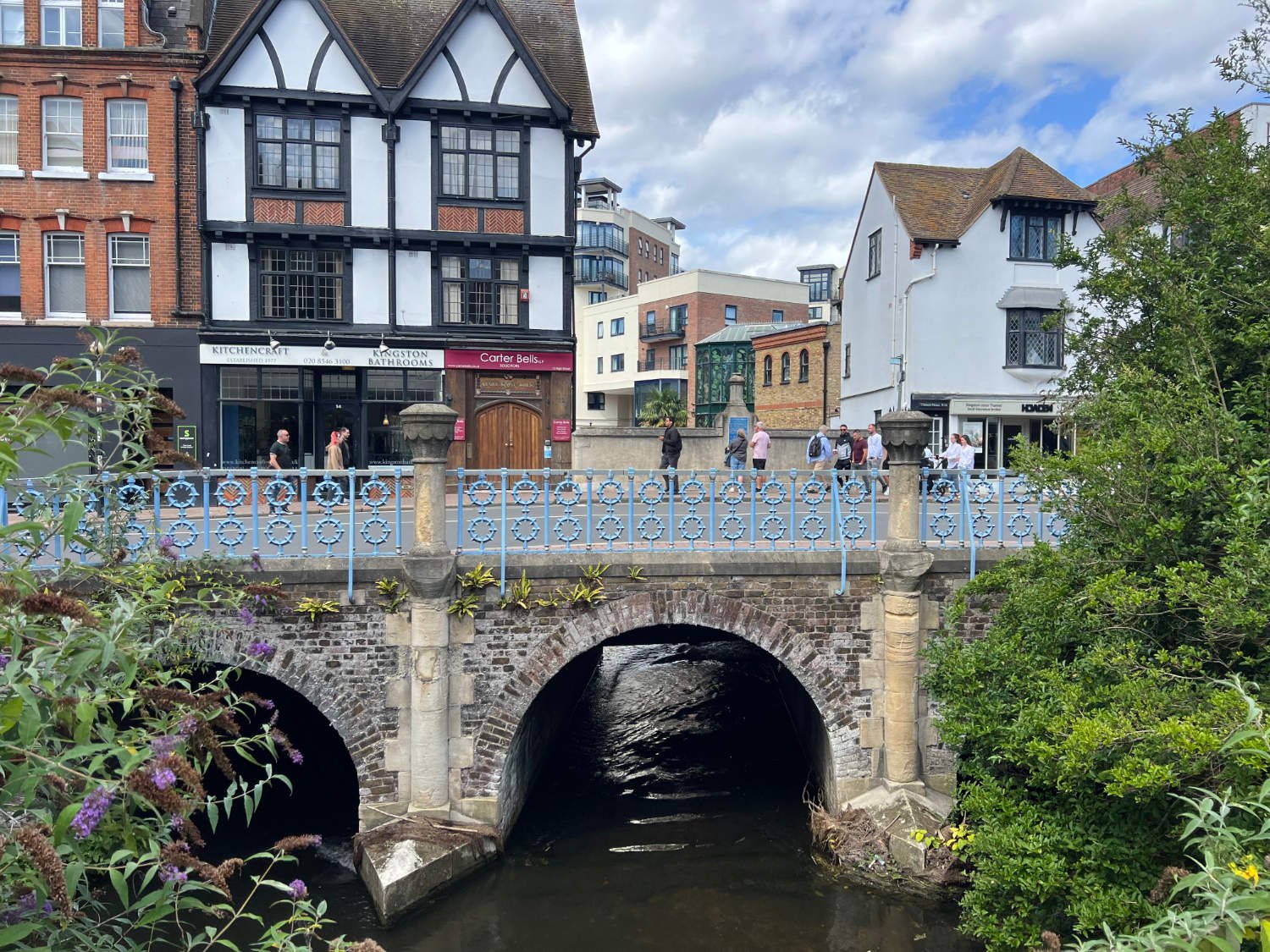13km or 34km Hogsmill River
Ride overview
Above all else, this is a great London gravel ride. It’s almost traffic free, it’s easily accessible, and to crown it all, its very pretty. The river Hogsmill is one of the most exclusive rivers in the world; for it is a chalk stream. It stretches the credulity that one of the rarest natural phenomenon on the planet ( there are only jsut over 200 such streams) can be found here, in London. Along this splendid green and almost entirely traffic-free ride, you pass the ‘Stone of England’ upon which no less than nine English Kings were crowned. There’s also one of the oldest bridges in the land, and remants of the many gunpowder works which used to line the river banks. The route is green along almost all its length as well as traffic-free, making it a perfect route for a family day out. For more experienced riders, it is another opportunity to enjoy some ‘gravel’ within the confines of London. The short route can be extended with a ride back to the start in Ewell, with a pleasuant ride through an assortment of parks.










Ride Practicalities
START/FINISH: Ewell West/Kingston-Upon-Tyames DISTANCE: 13.5km or 34.5km if you ride the River Route TOTAL ASCENT: 55m TERRAIN AND SURFACES: dedicated bike lanes and gravel paths and a couple of quiet suburban roads. In winter some of the paths may be muddy RECOMMENDED CAFÈS/PUBS/: Ewell; Bourne Hall; Kingston; The Ram NEARBY MAINLINE TRAIN SERVICES: Ewell West, Kingston, PLACES TO VISIT; The ‘throne’ of Saxon Kings, Kingston Town Hall LINKS TO OTHER RIDES: The Arcadian Thames, London to Epsom
Ride Notes
Your first encounter on this ride down the Hogsmill is with a flying saucer. Or that is how the locals refer to Bob Loren’s 1970 Community centre which was a replaceement for the 18th century Bourne Hall. Inside the spectacular building is a super cafe, several community spaces, a public library and a local museum. Such a community resource these days are as rare as a chalk stream.
Bourne Hall Community Centre
The original Bourne Hall, or as it was then called Garbrand Hall, dates from around 1770 when a prosperous London Wine Merchant built himself a country pile, of which only the ‘dog gate’ survives. The Council were bequeathed the house and estate and the Ewell Social Centre opened in 1970, a masterpiece of ‘70’s community architecture.
You are not permitted to ride in the park although many do, past the ornamental ponds which are fed by the springs of the Hogsmill. Exit the park under the Dog Gate, ride past ‘The Spring Tavern’ (a bit of a clue that you’re near to the source of the river) and ride past more ponds into the woods on a good, well-surfaced path. The idea of a transluscent chalk stream running through banks of watercress, the water as clear as anything in your glass, is an image you’ll have to park for awhile. The ponds are in a poor state - full of duck poo and goodness knows what else. That said, the clarity of the water soon clears as you ride through the woods.
Dog Gate, Bourne Hall
The trees disguise an industrial past, for this was a busy industrial stretch, due to the speed of the river which powered mills making paper and gunpowder as well as grinding corn. It is thought that there were twelve gunpowder mills spread over the next couple of miles, although some say there were more. The area was perfect for gunpowder manufacture; the river was fast flowing which enabled the milling of saltpeter (potassium nitrate) and charcoal - a key ingredient - was made using the wood of the poplars and alders nearby. You may see the brick foundations and the mill races peeking through undergrowth. Making gunpowder was a dangerous business and some of these mills accidentally blew up.
The wide gravel paths of the Hogsmill
The riding is easy, on gravel paths, across water meadows, under willow arches, brambles ready for an autumn picking. It’s traffic-free the whole way until you reach the Kingston Road, and despite this being London, there is barely a house in sight, let along a skyscraper or sounds of industry.
John Everett Millais, Ophelia (Source; Wikicommons)
The background of river, flowers and reeds in one of the most famous pre-Raphaelite paintings, that of Ophelia by John Everett Millais was painted in the Tolworth Water Meadow, which you ride over on a grassy track. Ophelia herself, was modelled on a 19 year old Elizabeth Siddal, who had to lie fully clothed in a bathtub for such a long time that she nearly died of pneumonia. Her father sued Millais for the doctor’s fees.
Once you have crossed the A240, the Kingston Road using the pedestrian crossing, ride on the pavement unless you are confident in riding along a quite busy road. There is a short deviation to avoid the road along a track, and at it’s end you cross the B284 and arrive at St. John the Baptist Church. It’s of Saxon origin, and the church notes state that the walls of the chancel were repaired in 1611. There’s something timeless about that idea of having to repair a church so long ago.
Onwards, and the next stretch of the river is particularly muddy after rain. Almost impassably so. If this is the case, return to the church and continue along the B284 for a a couple of hundred metres, before turning left along Manor Drive. Either route lands you at the A3, which you cross using the underpass.
Berrylands
There’s one more section of serene riverside riding before entering the suburbs of Kingston-upon-Thames at Berrylands. You ride past waterworks, a cemetery, (where one of the first graves you see inside the gate is the grave of Florence Burton, who was a widow for over 50 years) and a Gurdwara.
Beware Cyclists - beware OF? cyclists, or Cyclists Beware of ?
Once in the town, using a series of quiet roads, you arrive at the Town Hall, where encased in a fence constructed to resemble a crown is the stone on which (legend states) nine early English Kings were crowned. English History is worn lightly, for this sarcen stone would surely be given a prominent position as well as role in any of the other home nations. But here in the Royal Borough of Kingston-upon-Thames, our crowning stone is housed beside a busy traffic junction. There is no actual evidence of such a stone being used in the 9th century, but legend dictates that it was so.
Across the road is the Clatten bridge - so named by the noise of horses hooves crossing it. The bridge is one of the oldest in the kingdom. The final few metres of the Hogsmill are closed to cyclists unless they dismount. So dismount, follow the river to its confluence with the Thames. Then, should you be thirsty, turn left along the Thames to The Ram, a riverside pub with good beer (it brews its own) along with some standard pub grub.
Every route on this website has been carefully researched as well as ridden. However situations on the ground can change quickly. If you know of changes to this route, or cafes, pubs and the like which you think other cyclists need to know about, feel free to share your thoughts below.
If you enjoyed this guide, why not subscribe to the website so as not to miss other inspirational routes?
wheremywheelsgo.uk is a Feedspot UK Cycling top website






